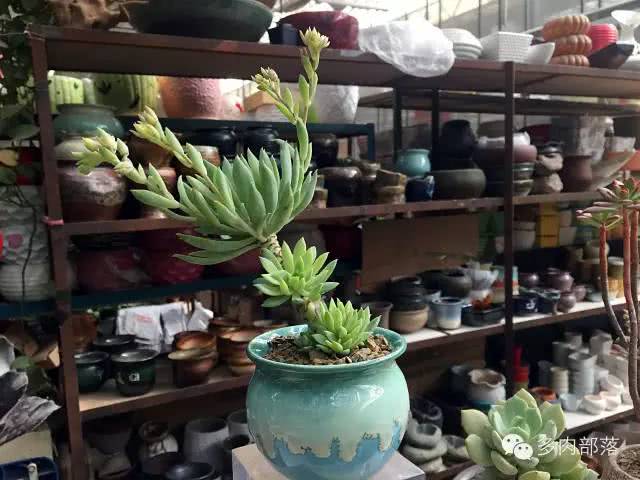Guidelines for raising meat: viruses, bacteria and fungi

The succulent tribe has prepared a wealth of meat raising knowledge for you to reply to the following keywords to watch.
Novice, seedling, leaf cuttings, root cultivation, dormancy, affixation, ventilation, overgrowth, exposure, rain,
Root drying, old pile, water control, beheading, flowering, fertilization, coloring, potting, sunburn, paving,
Pots, platters, soil, fine products, watering, basin change, black rot, lighting, anti-freezing, rooting,
Summer, rooting, brocade, insect pests, sowing, diseases, stone flowers, scale insects
The text begins:
Flower friends, especially beautiful flower friends, are most afraid of meat diseases. No wonder, after all, raising meat at home is in the hope that these fleshy little things will pretend to be cute and cute, but I don't want to get into anything terrible.
But there is no way, you have to learn to face all kinds of diseases when you enter the meat pit. Not only dare to face it, but also have to harden the scalp to treat them. By the way, I also train myself from a young lady to a strong girl. After all, if you want to deal with the disease calmly, of course you have to find out what caused the disease.
Let's start with the virus. I think when we raise meat, we often put the word disinfection on the top. In fact, we have wronged the virus a little bit. Because the vast majority of meat diseases have nothing to do with the virus. It is true that the disinfection methods we usually use can kill the virus, but our real purpose is often only to kill fungi.
To put it more colloquially, a virus is actually a protein with a small segment of genetic genes. There are so many ways to kill viruses that most viruses lose activity due to protein deformation at temperatures above 40 ℃. Disinfection lamp, alcohol wipe, potassium permanganate solution and other methods that can destroy protein can easily kill the virus.
It is not accurate to say that most diseases are not related to the root virus, but most viral infections are not fatal to meat, because the virus is actually parasitic in the flesh, of course, do not want their host meat to die.
The virus is really a very small thing, so small that it is hardly life. The only thing that can be associated with life is that there is a small gene in the virus. Viruses exist to replicate this small piece of gene. So when the virus invades the cell, it hides a gene disguised as meat. When the cell divides, it copies a small piece of the virus's genes together. As a result, it seems to us that meat is not suffering from any disease, but a strange mutation has taken place.
The emergence of meat that we often talk about is partly caused by the invasion of the virus. Some Jinhua meat varieties cannot be propagated by leaf insertion or sowing, and it is also because there is no virus in the young cells of the stem tip or the leaf meristem zone (which we meat breeders used to call the growth point). So the seedlings naturally lost the phenomenon of brocade.
Some viruses cause changes in the appearance of the leaves, such as tumors on the leaves or changes in the shape of the leaves, and so on.
Sometimes, the virus and meat will form a strong symbiotic relationship, so that the entire meat cell genes, there is the virus gene, thus creating a new breed.
The diseases caused by viruses are basically genetic diseases, which are so stubborn that even disinfection can not affect the interior of meat. For example, there is a virus that will mutate fleshy leaves such as Hong Zhiyu and B Nu Xin, turning them into ugly potholes.
In the face of such a disease, in fact, there is no good cure. The virus is usually spread through the juice of meat, and it is possible to spread the virus if the hand that touches the meat wound or the knife touches other meat during beheading cuttings.
Most viral diseases are not infected on your windowsill, and most of them carry the virus when they are beheaded from the diseased plant. So you can treat them as a breed you don't like. The general way to treat them is to ignore her and not to breed her in any way. Just let her fend for herself.
Besides, bacteria and fungi. Fungi are mentioned here rather than bacteria because bacteria and fungi are not the same organism. Without a very scientific explanation, you can simply think that bacteria are microbes that are closer to animals, while fungi are closer to plants.
Among the diseases of meat, bacteria cause few diseases. The most common thing I have ever seen is a bacterium that can make the roots of meat grow nodules. After growing nodules, it will affect the root system to sprout new roots, resulting in unable to absorb water and dry up. The way to deal with it is to trim the nodules in the root system, and then regenerate the root.
Most meat diseases are caused by fungi. Fungi like to grow in a humid and warm environment and reproduce through spores. It's easy to kill fungi. Ultraviolet radiation (that is, exposure to the sun) can kill fungi, destroy the breeding environment of fungi, and control fungi, such as keeping them dry.
But the spores produced by fungi are difficult to destroy. Every spring, countless mold spores are scattered in the warm and humid air in the south of the Yangtze River. Mold is a kind of fungus, as long as it falls in a humid environment, it immediately begins to multiply rapidly, forming a large area of mildew spots.
Mold does not consider what is succulent and what is a wall. As long as it is rich in nutrients and warm and humid environment, it is an ideal breeding base for mold.
For molds, the leaves of meat are rich in nutrition and water, so it is an ideal place for breeding. But in most cases, the cell walls of meat are sufficient to prevent the invasion of mold. Even if the mold invasion is successful, the meat can prevent further mold invasion by blocking the catheter.
Some flower friends like carbendazim and potassium permanganate, always trying to kill all the fungi, which is impossible. Because mold spores are everywhere in the air. It is not that molds do not invade meat, but that healthy meat leaves no flaws for them.
When black rot occurs, it is often due to wounds in the roots, stems or other parts of the meat that have not yet healed, allowing mold to enter. In this case, there is no need for a very high amount of mold in the soil. When they find a flaw in the meat, only one mycelium is needed to infect the meat, and it will multiply rapidly until the meat has black rot.
Other diseases, such as black mold, soot, and so on, are also caused by mold. Sterilization can have a certain effect, but the fundamental problem lies in the trauma and self-repair ability of meat.
Trauma makes meat itself an excellent environment for mold parasitism. But trauma alone does not necessarily lead to disease, because meat also has an animal-like immune system inside the body. The immune system controls mold reproduction and isolates infected tissue from healthy tissue. Then even if the wound is indeed infected, it can heal itself.
Only those flesh that are weak themselves, or those that are suffering from continuous rain when they are infected, will be unable to resist mold and become black rot.
If you have injured meat, to be on the safe side, spray a small amount of carbendazim on the wound to protect the wound. Although spraying carbendazim does not solve the fundamental problem, it can form a protective film on the surface of the meat wound, which will be killed by the residual carbendazim when the hyphae or spores fall on the meat wound.
In any case, I would like to emphasize that mold multiplies very fast. In the face of these lower plants, the best strategy is not to give the mold an environment to breed.
The plants we use are sterile, and not only that, the mixed plants are not easy to mildew even if they are watered through. The reason is that mold needs nutrients from meat to multiply in a warm and humid environment. And these plants are not suitable for mold growth. Often basking in the sun and keeping the meat in the best growth state is the best way to resist fungal diseases.
Meitu appreciates ~ Blue Angel:
- Prev

How does the orchid spring up? What details need to be paid attention to?
Orchid friend asked me: how on earth does orchid vernalization? Abandoning the technical terms in books and using my own experience to say things, this is the characteristic of a farmer, and it is the only ability I have. What we are talking about here is Chunlan and Huilan, both of which are needed.
- Next

The stunt of Chinese rose cuttage is 100% successful rate of cuttage.
[0036] the stunt of rose cuttage is 100% success rate with it! Every time the blue demon shares articles about rose cutting methods, there are always a lot of flower friends leaving messages saying that their cuttings are not viable. The blue demon was reading this two days ago.
Related
- Wuhan Hospital Iron Tree Blooming Result Was Instantly Frightened by the Gardener Master
- Which variety of camellia is the most fragrant and best? Which one do you like best?
- What is the small blue coat, the breeding methods and matters needing attention of the succulent plant
- Dormancy time and maintenance management of succulent plants during dormancy
- Minas succulent how to raise, Minas succulent plant pictures
- What are the varieties of winter succulent plants
- How to raise succulent plants in twelve rolls? let's take a look at some experience of breeding twelve rolls.
- Attention should be paid to water control for succulent plants during dormant period (winter and summer)
- Watering experience of twelve rolls of succulent plants
- Techniques for fertilizing succulent plants. An article will let you know how to fertilize succulent plants.

